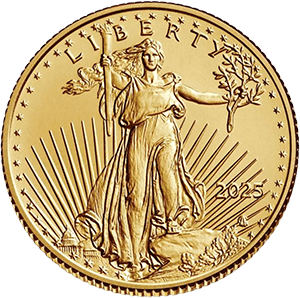
For the ultra-wealthy family office, the mandate is rarely just “generate return.” Rather, it is often framed as “preserve capital, transmit wealth across generations, safeguard purchasing power, and hedge against structural risk.” The concept of wealth as legacy—not just income or growth—dominates. In that context, one asset class has quietly regained prominence: gold.
In recent years, an increasing number of family offices have allocated to physical gold and related hard-asset strategies. To understand why—and how gold fits into the complex architecture of a modern family-office portfolio—we need to examine the backdrop of macro risk, portfolio architecture, and generational thinking.
The Family-Office Landscape
A “family office” is the entity (single-family or multi-family) that manages the holistic wealth of an ultra-high-net-worth family, beyond just investment portfolios. Among the global cohort of family-office investors, three themes dominate:
-
Intergenerational mindset: Decisions are made for decades, not quarters—preserving family capital, values, governance, tax and estate planning.
-
Alternative diversification: Public equities and traditional fixed income no longer provide the broad safe-haven that decades ago. Family offices are allocating heavily into alternatives, direct investments, real assets and private markets.
-
Tail-risk and geopolitical awareness: As the world navigates inflation, currency devaluation, trade and geopolitical disruption, family offices are increasingly thinking about the “What if the system gets stressed?” scenario.
From this vantage, gold takes on renewed relevance.
Why Gold? The Rationale for Inclusion
A. Hedge Against Currency & Inflation Risk
Historically, gold has served as one of the few assets that preserve purchasing power when fiat currencies erode. Many family offices, mindful of inflation + currency uncertainty, view gold as a form of “wealth insurance.”
A recent article notes: “Nearly a quarter of family offices now hold gold, even though it represents only around one per cent of the average portfolio.” While small in allocation, the adoption signals recognition of gold’s hedge role.
B. Hard-Asset Diversification
As many family offices tilt toward illiquid alternatives, direct investments, private credit and real estate, gold adds uncorrelated optionality. It offers a liquid, global asset that behaves differently than equities or private-capital investments.
The 2025 survey of family offices reports that among tail-risk mitigation strategies, gold and other hard assets are notable.
C. Safe‐Haven / Crisis Buffer
In moments of sharp systemic disruption (currency crisis, political upheaval, rapid inflation), gold has often out-performed or at least held value while other assets declined. For family offices whose horizon is decades and whose mandate is preservation, this role is powerful.
D. Generational Narrative & Symbolism
Beyond the numeric case, gold carries a symbolic resonance: it is tangible, finite, globally recognized and culturally embedded across generations. For a family with multi‐decades, multi‐generational thinking, that heritage appeal matters.
How Family Offices Are Structuring Their Gold Exposure
While exact structures vary greatly, here are typical approaches and considerations:
-
Physical bullion holdings
Many family offices prefer direct ownership of physical gold (bars, coins) held in high-security vaults. This gives full ownership, control over custody, no counterparty derivative exposure. -
Allocated vs unallocated holdings
Critical to understand whether the gold is fully allocated (segregated) or part of a pool. For legacy families, clarity of ownership and custody is essential. -
Storage and jurisdiction
Family offices often choose vaults in politically stable, low-risk jurisdictions. They also consider transportation, insurance and evacuation risk in extreme scenarios. -
Tax / estate / rollover planning
Integrating gold into the broader family wealth plan means thinking around tax implications, inheritance/gift strategy, liquidity needs, estate planning and alignments with other assets. -
Allocation size & dynamic adjustment
Many are modest: a few percent of total AUM. For example, in one survey, gold represented about 1 % of average family office portfolio but marked for increase. The idea is less about “betting big” and more about “insurance allocation.” -
Monitoring & discipline
Because gold doesn’t yield dividends and can be volatile, it must be monitored as part of the strategic allocation, rebalanced when necessary, but held with discipline.
Case In Point: Trends You Should Watch
-
In Asia & Middle East family offices: Reports indicate higher forecasted allocations to gold in response to geopolitical risk.
-
Some family offices are bypassing intermediaries entirely—directly financing, shipping, or trading gold bullion themselves.
-
The macro backdrop of potential rapid inflation, currency debasement concerns, and geopolitical instability all make gold’s hedge role more compelling today than in a decade of stable low-inflation.
-
Yet: Gold remains a minority allocation—not a portfolio anchor in most family offices. The broad focus is still on private equity, real estate, infrastructure and direct deals.
Practical Recommendations for Family Offices (and Advisors)
For family offices (or advisors serving them) evaluating gold as part of the portfolio, here are five actionable considerations:
-
Define the role
– Is gold being held as a hedge against inflation/currency risk?
– Is it a crisis-asset buffer?
– Is it symbolic/generational?
Clarifying the why helps set allocation, structure and monitoring. -
Set appropriate allocation
For a long-term family office portfolio, the allocation might be small (1-5 %) but meaningful. The emphasis should be on durability, not chasing returns. -
Establish proper custody and governance
Gold ownership requires clear documentation, segregation, secure vaulting, insurance and audit. Multi-generational governance demands clarity of title, succession, transfer rules on these holdings. -
Integration with legacy and estate planning
Ensure gold fits within the broader family governance: how it passes to next generations, how it is valued, how liquidity needs are met, how tax/estate implications are planned. -
Monitor macro conditions, but avoid timing
Because gold’s role is hedge/insurance, family offices should avoid trying to time gold moves aggressively—rather treat it as part of the strategic asset base. Evaluate signals: inflation, currency risk, geopolitical stress—but maintain discipline.
Gold as a Quiet Sentinel
In a world of accelerating complexity—where inflation, sovereign debt, global trade disruption, currency moves and generational wealth transfer all loom—family offices must think not only of growth, but of preservation and optionality. Gold, with its unique historical role as a store of value and hedge, offers a compelling pillar within that architecture.
For the modern family office that seeks to steward capital across generations, gold is less about chasing high returns and more about maintaining optionality and resilience. When designed & governed properly, it becomes a quiet sentinel against uncertainty and a tangible legacy asset that carries both economic and symbolic weight.


